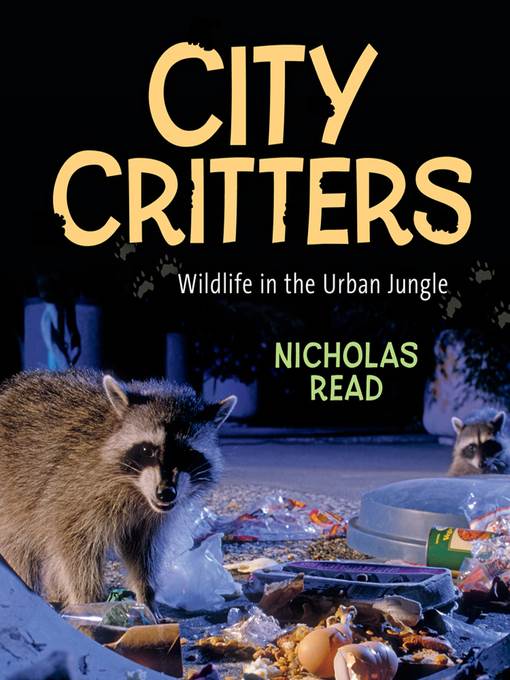
City Critters
Wildlife in the Urban Jungle
فرمت کتاب
ebook
تاریخ انتشار
2012
Lexile Score
1180
Reading Level
6
ATOS
8
Interest Level
4-8(MG)
نویسنده
Nicholas Readناشر
Orca Book Publishersشابک
9781459803237
کتاب های مرتبط
- اطلاعات
- نقد و بررسی
- دیدگاه کاربران
نقد و بررسی

April 30, 2012
Read follows The Sea Wolves and The Salmon Bears with a thought-provoking investigation of the growing number of animals sharing urban environments with humans. “But how did we reach a point where having a black bear in your garden, while never desirable... is almost normal?” writes Read in his introduction. “Believe it or not, you can probably answer the question in one word: space.” In seven chapters divided by animal types (mammals like raccoons and deer, invasive species like the zebra mussel, urban standbys like spiders and pigeons) and illustrated with numerous color photographs, Read demonstrates how human developments affect animals’ abilities to thrive and survive, and leaves readers with plenty of food for thought. Ages 8–up.

March 15, 2012
An unfocused but mildly entertaining introduction to our nonhuman neighbors and housemates. Expanding his definition of "urban animals" to include butterflies, zebra mussels, cougars and even certain kinds of whales, Read presents quick tallies of creatures who have proven adaptable enough to thrive, or at least survive, in or near towns and cities. They do so largely, he claims, because we destroy their natural habitats and also, deliberately or otherwise, feed them. He seems fonder of colorful figures of speech than strict accuracy--deer in Boston are hardly "as common as dandelions," and conversely many might wish that city pigeons were only "as common as McDonald's outlets." Nevertheless, he presents a reasonably extensive menagerie of mammals, birds, reptiles and "creepy crawlies" that urban or suburban U.S. and Canadian readers are more than likely to encounter. Aside from one scene of falcons chowing down on a pigeon, the mix of close-up and mid-distance color photos on every spread present their subjects in fetching poses. A discourse on invasive species and a closing appeal to conserve wild spaces are tangential but not entirely foreign to his main subject. Not so much a systematic identification guide as a broad, engagingly informal reminder that we are sharing our immediate surroundings, as well as our world in general, with others. (index, glossary, online resources) (Nonfiction. 11-13)
COPYRIGHT(2012) Kirkus Reviews, ALL RIGHTS RESERVED.

May 1, 2012
Gr 6-9-Animal adaptation is the theme of this interesting and fact-filled book about the many creatures sharing our urban landscapes. Firmly establishing that the loss of rural space is the primary reason that many more wild animals are finding their way into cities, the author goes on to discuss the multiple threats facing many species. Beginning with the more familiar mammals and rodents, including skunks, raccoons, coyotes, and rats, and then introducing a variety of other types of wildlife that live in, under, and surrounding our large urban areas, Read casts a broad net to include all of North America. Marine animals, aquatic creatures, birds, reptiles, insects, and spiders are discussed. One might not think of whales and sharks as urban, but they are included since they often wander close to heavily populated shores. Numerous full-color photographs and sidebars are scattered throughout. In discussing the plight of the many animals displaced from their more natural surroundings, the author makes a plea for the considerate and concerned treatment of them as well as for a general awareness of our changing world and the threats to wildlife everywhere. Attractive enough for general reading and useful for a variety of classroom studies of ecology, the environment, and biology, this is a welcome addition to most collections.-Eva Elisabeth VonAncken, formerly at Trinity-Pawling School, Pawling, NY
Copyright 2012 School Library Journal, LLC Used with permission.

























دیدگاه کاربران